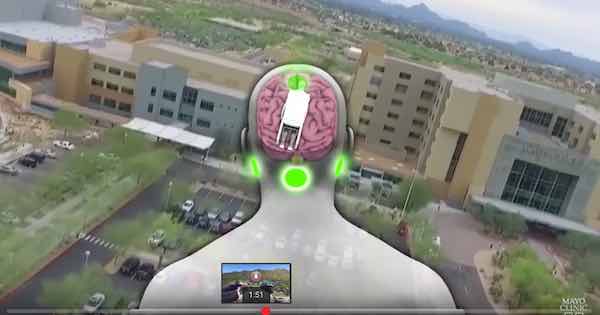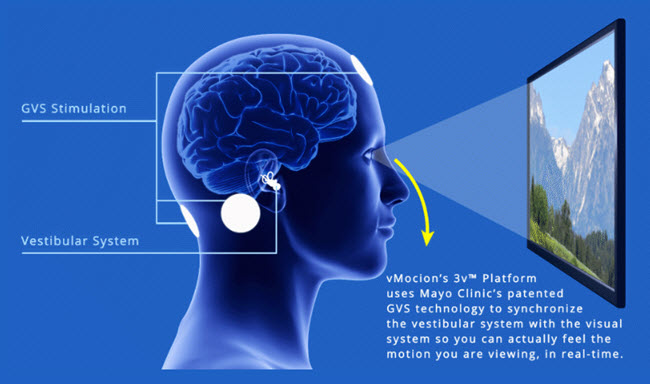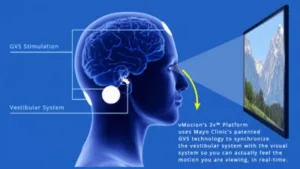One of the issues that is plaguing augmented and virtual reality solutions is the sensitivity of some people to motion sickness and related issues. Some people are more prone to experience this effect than others. From my own experience, I know that this is not just a consequence of the platform, but the sensitivity varies with the hardware execution as well as the content.
We know from 3D movies that some people have difficulties in dealing with the conflicting messages that are sent to the brain by the visual response and other senses. Some people experiencing nausea by just watching 3D movies. Some users of simulators have been complaining about this effect for quite some time. After discussing this with scientists at the Mayo Clinic, a technology has been developed that reduces these effects in pilots and other users of simulators.
The magic word is GVS or Galvanic Vestibular Stimulation, a technology developed over 10 years ago. The technology applies small electro-stimulations to electrodes on the sides and top of the head. These stimuli work on the inner ear of the user and make him believe that he his actually moving, even if he is sitting still.
 Source: vMocion.com
Source: vMocion.com
It is very clear that if the movement trigger is timed correctly with the visual stimulus from the AR/VR headsets, the user may believe that he is actually moving as his eyes suggest, eliminating at least one reason for developing nausea. The trick of the solution is in the placement of the electrodes and the timing of the stimuli, all provided by a proprietary algorithm developed by the Mayo Clinic. The same technology may also one day being used to treat vertigo and various balance disorders.
There is also a YouTube video available (http://tinyurl.com/jshus7c) that explains how this whole development started and what the technology can achieve. On the vMocion website is a video describing how the technology works in more detail.

This is quite a bit more sophisticated than a different solution shown at GDC last year. We reported on this in our article “VR Motion Sickness Countered – With a Fake Nose” that still relied on pure visual cues to overcome the nausea effect.
The Mayo Clinic is trying to commercialize this technology together with vMocion (vmocion.com). So far, no players have adopted this technology, even though some are in discussions with the developers of AR / VR headsets. While wearing electrodes while using a VR headset seems a little extreme, it surely sounds like a technology that could help AR and VR to overcome some major hurdles on the way to mass adoption. – NH

